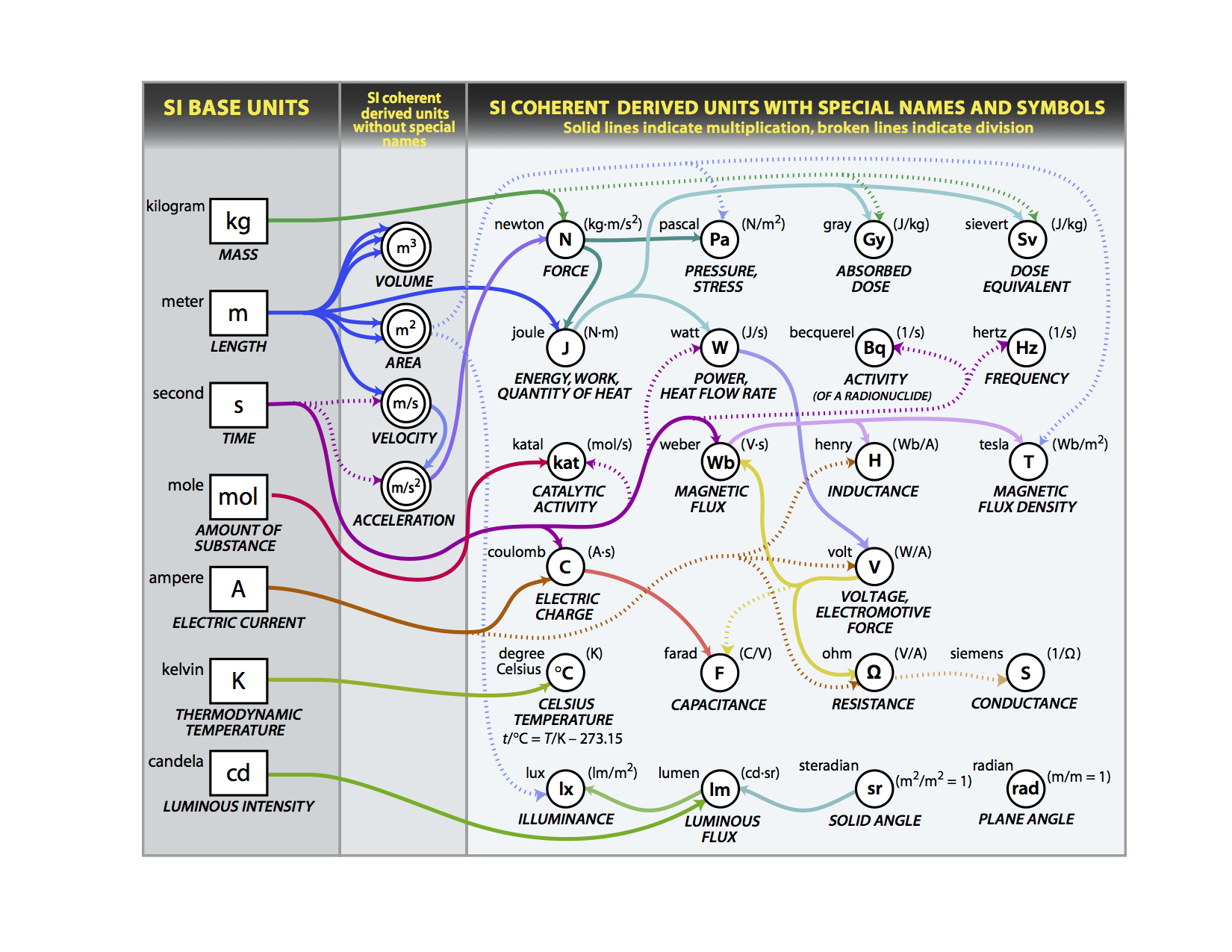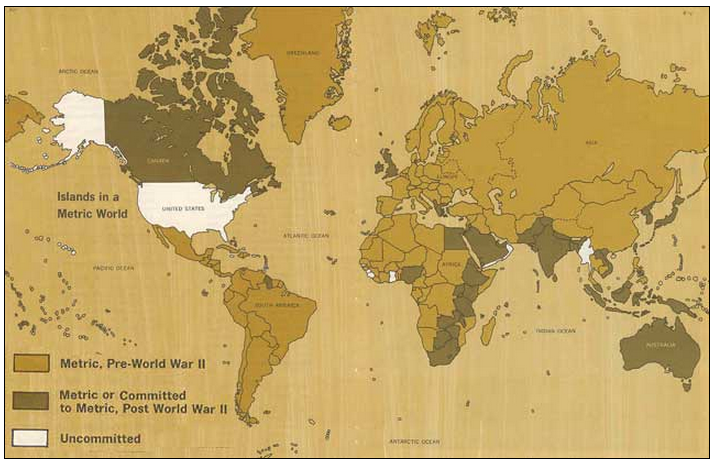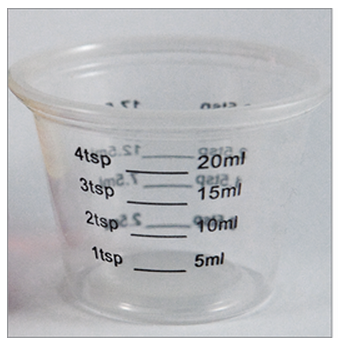/cdn.vox-cdn.com/uploads/chorus_image/image/33656923/4955476088_ccc920be5e_o.0.jpg)
The metric system is far superior to the bizarre system of feet, miles, pounds, and gallons used in the United States. The whole rest of the world seems to get this. So why aren't we doing it, too?
The United States actually tried to once before. In the 1970s, there was a big push to switch to metric. But it fizzled out because the legislation wasn't strong enough. And that failed legislation created a slew of naysayers who think that switching to metric is simply impossible.
But that's not true. The reasons to go metric are stronger than ever, and it's time to revive the effort. In our increasingly global economy, America's bizarre measurement system puts the country at a disadvantage. Popular opinion on the matter seems to be quite positive, and there are some hints of change on the horizon.
Why the metric system is superior
The measuring system that the United States uses right now isn't really a system at all. It's a hodgepodge of various units that often seem to have no logical relationship to one another, units collected throughout our history here and there, bit by bit. Twelve inches in a foot, three feet in a yard, 1,760 yards in a mile.
The metric system, by contrast, was intentionally created with ease and simplicity in mind. And as a result, it's incredibly efficient to use. All you need to do is multiply or divide by some factor of ten. 10 millimeters in a centimeter, 100 centimeters in a meter, 1,000 meters in a kilometer. Water freezes at 0°C and boils at 100°C.
Conversion between types of units in metric is also simpler, as you can see from the chart below. For example, area is simply meters squared, not random things like acres:

(NIST)
The metric system makes back-of-the-envelope calculations far easier for, say, making a solution in a laboratory or calculating the area of a parking lot or figuring out how many pills to give someone of a particular body weight. It also makes it quicker to double-check a calculation that a computer just spit out.
In large part because of these benefits, many industries in the United States have independently decided to switch over to metric on their own — including science, health care, energy, and car manufacturing. Even the US military is almost entirely metric.
Everyone else is on metric — so why not the US?
The United States is the last remaining industrialized nation with no formal commitment to going metric. America's position is causing unnecessary isolation. It's an impediment to trade and puts the United States at a disadvantage.
Not being metric-fluent can hamper collaboration and communication across borders. And it's not just annoying, but can add real costs. For example, many US manufacturers need to make two kinds of products for every item — one for here and one for there. Foreign manufacturers also have to modify products just for the US market (or decide that maybe it's not worth the bother).
The US is one of the few holdouts not on the metric system
Islands in a Metric World, 1971. Since this map was made, the US hasn't gotten any allies on its lonely island. (From "A Metric America: A Decision Whose Time Has Come" by NBS, via USMA)
Using two systems leads to appalling errors
Being stuck with US customary units is bothersome, but a culture that does half and half is even more problematic. Every time someone (or a computer) converts a unit from one system to another, there's a potential for error.
Proponents of the metric system love to collect conversion-error horror stories. One is the time that NASA lost a $125 million Mars probe or a Boeing 767 ran out of fuel midair — all because of errors between metric and non-metric units.
Another big problem is in medicine. Some 3,000 to 4,000 kids end up in the ER each year because of wrong doses from a caregiver. And unit confusion is partially to blame.
Consider a simple cup for dispensing liquid meds, below — it has both teaspoons and milliliters on it. That, as Bridget Kuehn reported, makes it easier for people to give the wrong dose. (And because 1 teaspoon just happens to be equal to 5 milliliters, it's likely that a wrong dose would be off by a factor of five.)

(Kuehn, BM. JAMA. Published online May 21, 2014. doi:10.1001/jama.2014.5090JAMA)
Both the Institute for Safe Medication Practices and the US Centers for Disease Control and Prevention are encouraging manufacturers and the pharmacies to use only the metric system on over-the-counter meds for these reasons. But they aren't requirements, just suggestions.
Another problem with a dual-measurement US is that some professions are speaking a different language than the rest of the culture. Experts regularly talk about the need for more qualified American workers in science, technology, engineering, and mathematics (STEM). But because metric isn't learned from birth, students must first learn a foreign language — the metric system — before they can learn science or engineering or become part of the medical community. That's a barrier to entry that just shouldn't be there.
The US tried (and failed) to go metric in 1975 ...
Congress passed the Metric Conversion Act of 1975 at about the same time many other countries were also switching over. It created the United States Metric Board to educate people about the metric system and to coordinate a voluntary switchover.
But that law had two key problems. Unlike the legislation that created a metric UK, Canada, or Australia, it was voluntary instead of mandated. And it had no deadline for when the switch must be finished, which deflated the cause's urgency.
Facing a fair amount of resistance from the public and without a congressional mandate that could force changes, the United States Metric Board simply couldn't do its job. And so by 1982, President Reagan had the board disbanded.
Some amendments have been made to the act since, including one that declared metric "preferred" (but not mandatory) for trade and has encouraged many federal agencies to use the metric system today. But aside from double labeling on the packaging on food and other consumer goods since 1994, requirements in the private sector have continued to be weak.
Here's how we could switch to metric today
There are several options if the United States wants to go fully metric:
1) New federal laws. Congress could pass a new law with a hard mandate and a solid timeline to switch over. This is what the US Metric Association favors. "It can't be done piecemeal successfully," Paul Trusten, a pharmacist and vice president of the US Metric Association, told me. But there doesn't seem to be much interest in it from Congress right now.
2) A gradual slide. Another possibility is that companies and people slowly slide toward the metric system on their own — with lots of confusion along the way. In this scenario, companies continue to adopt the system voluntarily, and state and federal regulations push metric at the margins.
This is already happening to some extent — metric pops up in lots of places in the United States: two-liter bottles of soda, 100-meter races. Some entire industries, such as science and medicine, already use metric.
But it could go further. For example, in the past few years the US National Institute of Standards and Technology (NIST) proposed an amendment to the Fair Packaging and Labeling Act that would give manufacturers the option to use only metric on product packaging. That would increase consumer exposure, which might make voters more comfortable with mandatory metric laws.
And there does seem to be some public support. A 2012 petition to the White House for mandatory metric garnered more than 49,000 signatures (and a response from the director of NIST, who reminded them of the current voluntary regulations and that everyone can choose to use metric if they want).
3) State-by-state mandates. It's also possible that states will lead the way, like they have with many other issues, creating a country that is even more divided. Because of its dependence on international tourism, Hawaii had a bill in its legislature in 2013 that could have made it the first all-metric state. However, the bill doesn't seem to have gone anywhere.
How much would a switch to metric cost?
There is surprisingly little research on exactly how much a whole-scale mandatory push would cost the US in the long run. The 1975 law was passed in part because of a very supportive report on this from the Department of Commerce. But that was 1975.
I talked to Jason Rich, a financial analyst who previously researched the economics of going metric while a graduate student at Old Dominion University. He's says it's a tricky sell in the current economic climate.
"In the short term, [switching to metric] is more expensive. In the long term, things seem to flatten out and make themselves more valuable. But having concrete evidence to prove that is difficult to find," he says. "As the economy turns around, that [bad] attitude [towards the metric system] certainly will change if it can be economically proven that it’s not going to be a detriment to our economy in the long term."
Further reading
The US's official kilogram is getting heavier.
The metric interstate highway of Arizona
The blog More than a Mile Behind has been keeping close track of the metric system issue. So does the US Metric Association.
Correction: Removed a reference to the calorie as a metric unit. It's not.
Update: In December 2014, updated information about Hawaii's metrification effort.